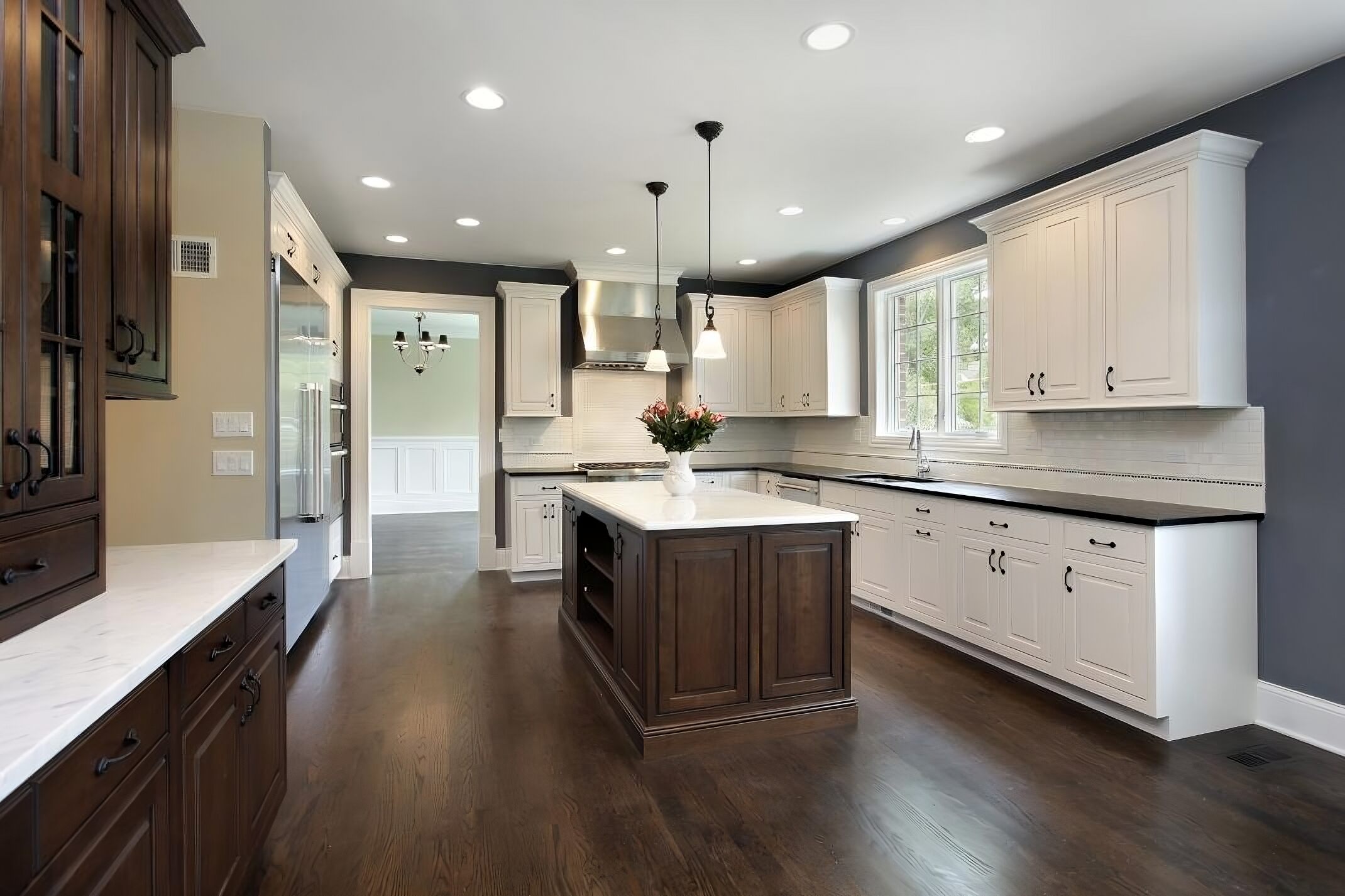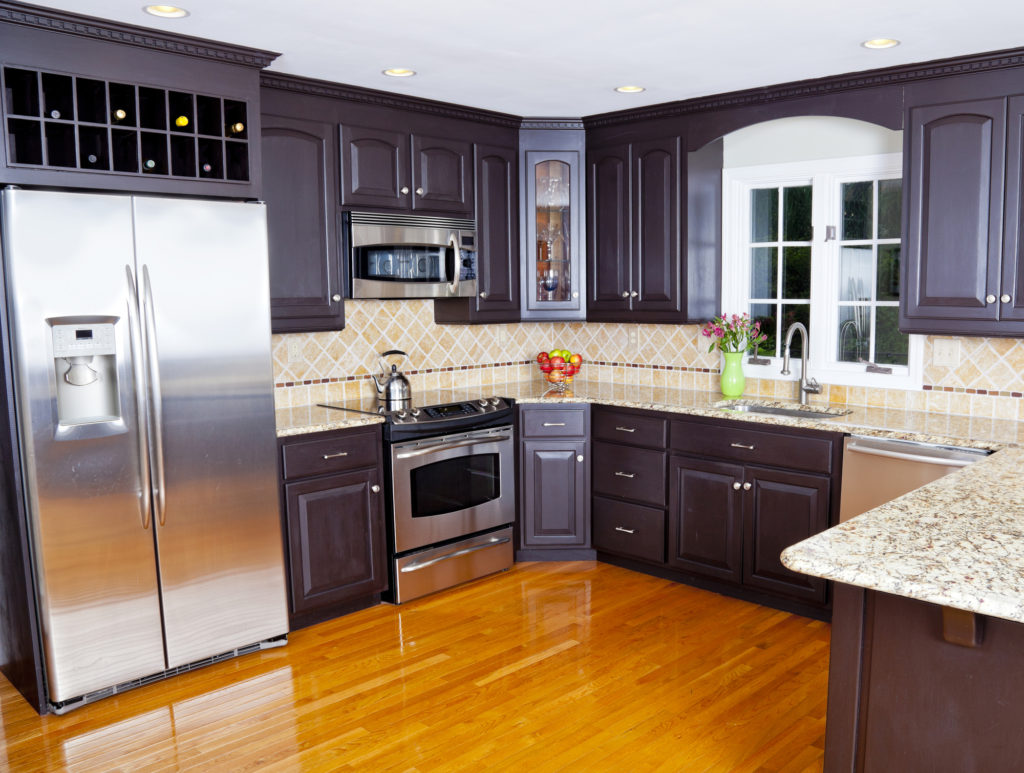Understanding Staining Techniques: Staining Dark Cabinets Lighter

Staining your dark cabinets lighter is a great way to refresh your kitchen or bathroom. But choosing the right stain can be a little tricky, especially if you’re aiming for a specific color. There are several types of wood stains, each with its own unique properties and benefits. Understanding these differences can help you select the best stain for your project.
Types of Wood Stains
There are three main types of wood stains: oil-based, water-based, and gel stains. Each type has its own advantages and disadvantages, and the best choice for you will depend on your project needs.
- Oil-based stains are known for their deep penetration into the wood, resulting in rich, even color. They are also slow to dry, which gives you more time to work with the stain and achieve a smooth finish. However, oil-based stains are flammable, have a strong odor, and require more time to clean up. They also tend to raise the grain of the wood, which may require sanding after the stain dries.
- Water-based stains are more environmentally friendly and have a lower odor than oil-based stains. They also dry quickly and clean up easily with soap and water. However, water-based stains don’t penetrate the wood as deeply as oil-based stains, which can lead to uneven color and less durability. They also tend to raise the grain of the wood, just like oil-based stains.
- Gel stains combine the advantages of both oil-based and water-based stains. They are thick and creamy, which helps them adhere to vertical surfaces and prevent dripping. They also penetrate the wood well, providing a rich, even color. Gel stains are also relatively easy to clean up, though they may require more time than water-based stains.
Choosing the Right Stain
The best way to choose the right stain for your project is to consider your desired color, the type of wood you’re working with, and the level of difficulty you’re comfortable with.
- Color: If you’re looking for a dramatic color change, oil-based stains are often the best choice. However, if you want a subtle color change, water-based or gel stains may be more suitable. Consider the overall style of your kitchen or bathroom and choose a stain that complements the existing decor.
- Wood Type: The type of wood you’re working with will also affect the way the stain absorbs. Some woods, like oak, are known for their porous nature and tend to absorb stain more readily than others. If you’re working with a dense wood like maple, you may need to use a stain that penetrates deeper, like an oil-based stain.
- Difficulty Level: If you’re a beginner, water-based stains are often the easiest to work with. They are less messy and have a shorter drying time. However, if you’re comfortable with more complex techniques, oil-based or gel stains can offer a wider range of color options and a more durable finish.
Preparing for Staining

Okay, so you’ve got your dark cabinets and you’re ready to give them a lighter look. Before you dive into the staining process, it’s crucial to prepare your cabinets properly. This will help ensure a smooth and even finish that you’ll be happy with for years to come.
Sanding the Cabinets
Sanding is essential for creating a smooth surface that will allow the stain to penetrate evenly. It also helps remove any old finish or imperfections.
- Start with a coarse-grit sandpaper (80-120 grit) to remove any old finish or imperfections.
- Progress to a medium-grit sandpaper (120-180 grit) to smooth out the surface.
- Finish with a fine-grit sandpaper (220-400 grit) for a super smooth surface.
Cleaning the Cabinets
Once you’ve sanded your cabinets, it’s important to clean them thoroughly to remove any dust or debris. This will prevent the dust from interfering with the stain and ensure a clean, even finish.
- Use a tack cloth to remove dust from the cabinets.
- You can also use a damp cloth to wipe down the cabinets, but make sure to dry them completely before proceeding.
Lightening Dark Cabinets

Lightening dark cabinets can give your kitchen a fresh, modern look. You can choose from several methods, each with its own advantages and disadvantages. Let’s explore the most common techniques to help you decide which one is best for your project.
Comparing Lightening Methods, Staining dark cabinets lighter
This table compares the different methods for lightening dark cabinets, highlighting their key features:
| Method | Advantages | Disadvantages |
|—————–|—————————————————|———————————————————–|
| Staining | Provides a natural wood finish, enhances grain | Can be difficult to achieve a uniform color, limited lightening |
| Painting | Offers the most color options, covers imperfections | Can hide the natural wood grain, requires more preparation |
| Bleaching | Allows for significant lightening, reveals grain | Can damage wood if not done properly, requires careful handling |
Staining to Lighten Dark Cabinets
Staining is a popular method for lightening dark cabinets, as it preserves the natural wood grain and creates a warm, inviting look. The process involves applying a translucent stain that allows the wood’s color to show through while altering its tone.
Techniques for Staining
There are several techniques for applying stain to lighten dark cabinets, each with its own benefits:
* Water-based stains: These stains are easier to apply and clean up, but they may raise the wood grain, requiring sanding after application.
* Oil-based stains: These stains penetrate the wood more deeply, resulting in a richer color and a more durable finish. However, they take longer to dry and require mineral spirits for cleanup.
* Gel stains: These stains are thicker than water-based or oil-based stains, making them ideal for achieving a more even color and minimizing drips.
Considerations for Staining
When staining dark cabinets, it’s essential to consider these factors:
* Wood type: Different wood types react differently to stain, so it’s crucial to test the stain on a hidden area before applying it to the entire cabinet.
* Desired color: Choose a stain color that complements the overall kitchen design and creates the desired effect.
* Finish: A sealant or topcoat is recommended to protect the stained surface from scratches, spills, and moisture.
Applying Stain to Dark Cabinets
Here’s a step-by-step guide to applying stain to dark cabinets:
1. Prepare the cabinets: Clean the cabinets thoroughly to remove any dirt, grease, or wax. Sand the surfaces with fine-grit sandpaper to create a smooth finish and ensure the stain adheres properly.
2. Apply the stain: Use a brush, cloth, or sponge to apply the stain evenly, working in the direction of the wood grain. Apply multiple thin coats for a deeper color, allowing each coat to dry completely before applying the next.
3. Wipe off excess stain: After the stain has been applied, wipe off any excess with a clean cloth.
4. Let the stain dry: Allow the stain to dry completely before applying a sealant or topcoat.
5. Apply sealant or topcoat: A sealant or topcoat protects the stained surface and enhances its durability. Apply the sealant or topcoat evenly, following the manufacturer’s instructions.
Precautions for Staining
* Wear gloves and eye protection when working with stain.
* Work in a well-ventilated area.
* Test the stain on a hidden area before applying it to the entire cabinet.
* Avoid applying too much stain at once, as it can cause uneven color.
* Allow the stain to dry completely before applying a sealant or topcoat.
Staining dark cabinets lighter can be a fantastic way to refresh your kitchen, but it’s a big decision. Before you dive in, consider the overall aesthetic you’re aiming for. A popular trend is to pair white cabinets with a dark backsplash, creating a dramatic contrast.
This combination, often featured in modern kitchens, white cabinets with dark backsplash , can be a great inspiration for your project, even if you’re going for a lighter look. Think about how a lighter stain might complement the overall style you envision, and how it might interact with the other elements in your kitchen.
Staining dark cabinets lighter can be a great way to refresh your kitchen, but it’s a big decision. You’ll want to consider the overall aesthetic you’re going for, and that includes your countertops. If you have dark countertops, you might want to check out this guide on dark countertops what color cabinets to get a sense of what color cabinets would complement your existing surfaces.
Once you’ve settled on the right color for your cabinets, you can confidently move forward with your staining project and create a kitchen you love.